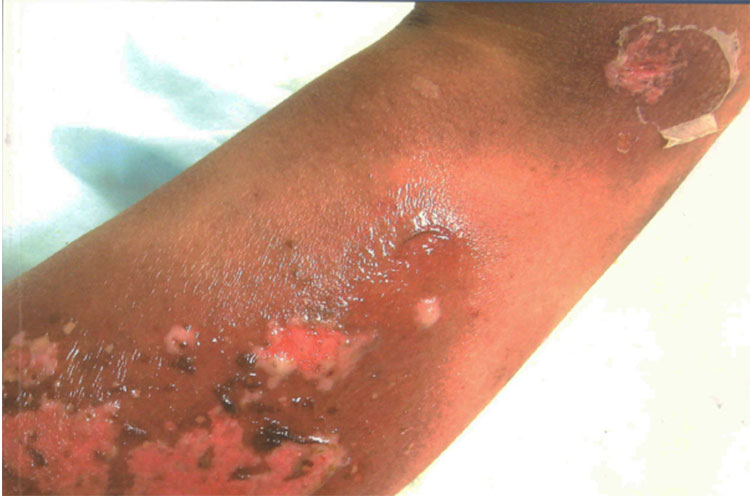Treating Stevens-Johnson syndrome and toxic epidermal necrolysis with high doses of glucocorticosteroids
Abstract
Stevens-Johnson syndrome and toxic epidermal necrolysis are drug-induced diseases with a low incidence but high mortality. Numbers come mainly from large cohorts such as the European Registry of Severe Cutaneous Adverse Reactions (EuroSCAR study, http:// regiscar.uni-freiburg.de) and others. Thus, the annual incidences of Stevens-Johnson syndrome and toxic epidermal necrolysis are estimated to be between 1.2 to 6 and 0.5 to 1.2 cases per million inhabitants, respectively1 . Mortality rate has been estimated as high as 30-50% for toxic epidermal necrolysis and lower in Stevens-Johnson syndrome patients (5%). The most commonly associated drugs include antimicrobial sulphonamides, betalactams, anticonvulsants (except valproic acid), allopurinol, nevirapine, and oxicam-NSAIDS (such as piroxicam)1,2. Most, but not all, cases occur within the first 8 weeks of drug exposure.
Author Biographies
Luis Fernando Ramírez
Allergy Unit, Inserm U657, University Hospital of Montpellier; Département de Pneumologie et Addictologie, Hôpital Arnaud de Villeneuve, 34295 Montpellier cedex 05, France
Pascal Demoly
Allergy Unit, Inserm U657, University Hospital of Montpellier; Département de Pneumologie et Addictologie, Hôpital Arnaud de Villeneuve, 34295 Montpellier cedex 05, France
References
2. Mockenhaupt M, Viboud C, Dunant A, Naldi L, Halevy S, Bouwes JN, et al. Stevens-Johnson syndrome and toxic epidermal necrolysis: Assessment of medication risks with emphasis on recently marketed drugs. The EuroSCAR-study. J Invest Dermatol. 2008;128:35-44.
3. Díaz J, Bonilla D, Ramírez AF, Herrera M, Ramírez LF, Serrano C. Dosis altas de corticoides sistémicos en pacientes con síndrome de Stevens-Johnson y necrolisis epidérmica tóxica: descripción de siete casos y revisión de la literatura. Rev Col Dermatol. 2011;19: 13-19
4. Sekula P, Liss Y, Davidovici B, Dunant A, Roujeau JC, Kardaun S, Naldi et al. Evaluation of SCORTEN on a cohort of patients with Stevens-Johnson syndrome and toxic epidermal necrolysis included in the RegiSCAR Study. J Burn Care Res. 2011;32:237-45.
5. Hung SI, Chung WH, Liu ZS, Chen CH, Hsih MS, Hui RC, et al. Common risk allele in aromatic antiepileptic-drug induced Stevens-Johnson syndrome and toxic epidermal necrolysis in Han Chinese. Pharmacogenomics. 2010;11:349-56.
6. Harr T, French LE. Toxic epidermal necrolysis and StevensJohnson syndrome. Orphanet J Rare Dis. 2010;5:39.
7. Kardaun SH, Jonkman MF. Dexamethasone pulse therapy for Stevens-Johnson syndrome/toxic epidermal necrolysis. Acta Derm Venereol. 2007;87:144-8.
8. Schneck J, Fagot JP, Sekula P, Sassolas B, Roujeau JC, Mockenhaupt M. Effects of treatments on the mortality of Stevens-Johnson syndrome and toxic epidermal necrolysis: A retrospective study on patients included in the prospective EuroSCAR Study. J Am Acad Dermatol. 2008;58:33-40
How to Cite
Downloads

Downloads
Published
How to Cite
Issue
Section
| Article metrics | |
|---|---|
| Abstract views | |
| Galley vies | |
| PDF Views | |
| HTML views | |
| Other views | |






